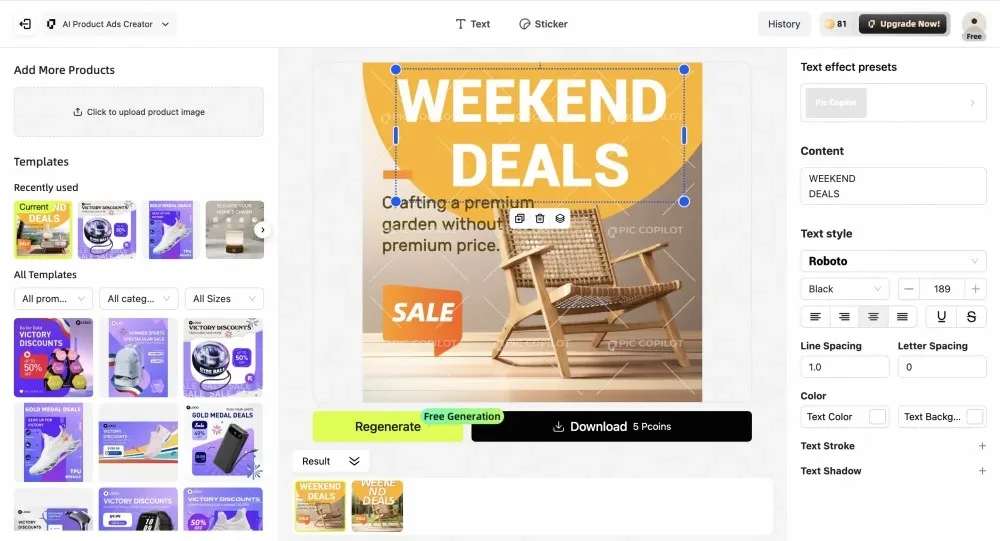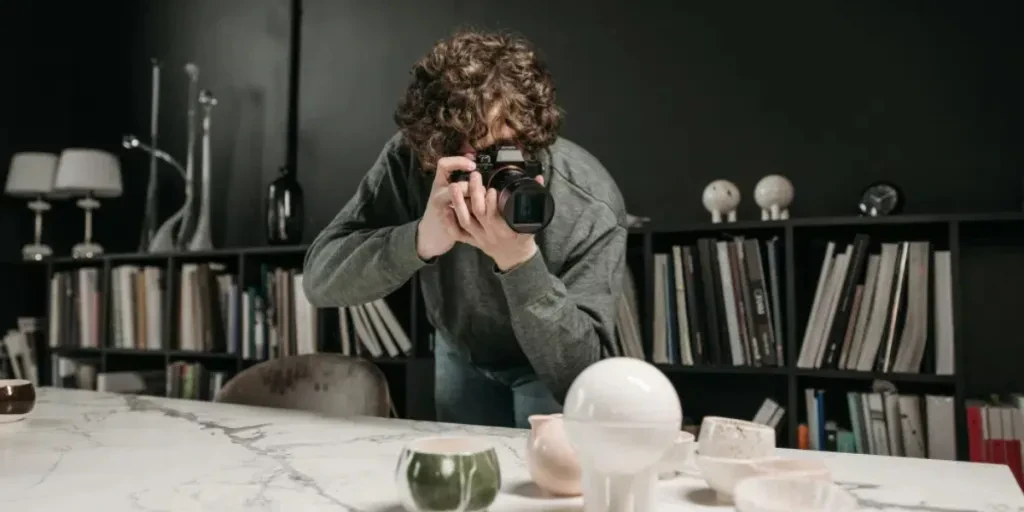First impression is everything. Studies have shown that the human brain processes images really fast; hence, you have only a moment to capture potential customers’ attention.
In most cases, online shoppers will either stay or leave a website within the first few seconds of entering the site, depending on what captures their attention first. Therefore, creating an visually engaging online store is crucial. One of the most effective ways to achieve this is through exceptional product photography.
As an e-commerce store owner, you know exactly how great your products are. But from the perspective of the customers, the only way they will ever get to interact with your products is through the photos on your website.
In this blog post, we will get into the different elements of the product photography so that you can walk away with those pro tips for getting the perfect shot.
Table of Contents
How product photography can increase conversions
Two main types of e-commerce product photos
Five tips to shoot high-quality product
Conclusion
How product photography can increase conversions
In our visual-driven consumer culture, your product images can either make you or break you online. Even if your product descriptions and offerings are exceptional, subpar visuals can deter potential customers.
It is said that photography represents the value of the product and, through that, it also represents the value of your brand. When done properly, it can drive conversions and contribute to long-term sales growth.
Great visuals improve customers’ experiences
A study by Justuno shows that a whopping 93% of customers list visual appearance as the main factor affecting their buying decisions. This statistic just puts more emphasis on investment in top-quality product photography.
If you are looking to make a bang, be sure to use inspiring imagery at every touchpoint with the customer. Don’t be frugal with high-quality images—sprinkle them throughout your digital identity, from social media and marketing campaigns to packaging design and everything else. In this way, you create an integrated visual story which will allow your customers to totally immerse in your brand experience.
Visual storytelling: The key element of brand identity
Branding is not all about logos and packaging; it should seep in at all levels of your business.
Product photography is a crucial ingredient of telling your brand’s story, no matter if you do this through social media updates, email marketing, promotional events, or online advertising.
This will give it a recognizable, memorable, and attention-catching, high-quality product photography appearance that tells your brand story through visual elements, thus fostering conversion through repeated business.
Two main types of e-commerce product photos
Clean-cut, white background product images
These are photos where the product has been isolated against a pure white background. They are the most common type of image you’ll see across Product pages, catalogs. The images offer a clear view of the product, and customers get to focus on the details of the product with no distractions.

Lifestyle or contextual images
These are images that show products in use or in other relevant contexts, greatly suitable for homepage, social media, and marketing campaigns. This allows customers to imagine a lifestyle with the product that emotionally connects them.

Five tips to shoot high-quality product
1. Optimal lighting
Lighting is possibly the key factor in product photography; it can make or break an image and will significantly affect color accuracy, detail visibility, and general appeal.
Natural vs. Artificial Light:
- Natural light is soft and flattering, perfect for lifestyle shots and relatively small products. The shortage is that it’s neither consistent nor controllable.
- Artificial lighting provides greater control and consistency. If you want to shoot during different times of the day, artificial lighting may be a better option. As a beginner, a simple two-light setup will be all you will need. Just place one light as your primary and another as a fill to reduce shadows on your subject or object.
Basic Lighting Setup Tips:
- Use diffusers to alter harsh lights to become softer and less glaring.
- Play with light angles to accentuate product features and shadow reduction.
- Shoot similar lighting throughout all product pictures, so the feel in each image is maintained.
2. Background setup
Design Product photography isn’t only about the product. Your background choice dramatically affects the total image’s impression, mood, and feel. A cleverly chosen background will do a lot: it can make your product pop up, give real-world context, or evoke certain feelings in potential buyers.
Different background choices can influence your image in many ways:
- A simple, harmonious background will better make your product stand out.
- White backdrops are visually strong.
- Colored backgrounds inject some emotion and thematic interest.
- Contextual settings help the customer create an image of how this product will be used in everyday life.
- Textured backgrounds may link your product to a specific place, season, or event.
The other way your background choice can determine image versatility is in the photoshoot itself.
E-commerce typically requires plain, monochrome backgrounds. On the other hand, marketing campaigns will usually have lifestyle backgrounds. Once more, think about your final use and routes to market before you organize product shots. That way, you will be able to determine what background types and amount of variety may be required in the production step.
Luckily, background management was transformed with new photo editing AI tools. With tools like PicCopilot, you are able to remove the existing backgrounds, and creates studio-quality background instantly.

This flexibility is exactly what makes this a game-changer for an e-commerce brand because from one set of product photos, they can very quickly create different background variations to support multiple selling and marketing needs.
This approach not only saves time and reduces cost, but also allows much greater creative trials in how product presentation may be accomplished.
3. Composition
Good composition guides the eye of the viewer to the most important aspects of your product.
Basic Composition Rules
- Rule of Thirds: Imagine your frame divided into a 3×3 grid. Place key elements along these lines or at their intersections.

- Symmetry: A symmetrical composition will add order and grace to some products.
- Negative Space: Do not be scared to leave free space in your image, as a matter of fact, it gives clarity with a tidy look.
4. Product styling and use of props
Styling of the product itself and the use of props can lift up your product from just being photographed into compelling visual story.
Choosing Suitable Props:
- Select props that complement your product without overshadowing it.
- Ensure props are relevant to your product and target audience.
- Use props to provide scale or context for your product.
5. Post-processing
Post-processing is the final step in creating polished, professional-looking product images.
Basic Image Editing Techniques
- Adjust exposure, contrast, and white balance for accurate color representation.
- Remove blemishes or imperfections that went unnoticed during the shoot.
- Resize images for a better composition or to meet certain platforms’ specifications.
Easy-to-Use Editing tools for Beginners
- Adobe Lightroom: Offers a lot of edit power but is easy to use.
- PicCopilot: Offers numerous professional template variations, great for ecommerce image editing.

Conclusion
Mastering product photography is something that only time, patience and a little creativity will do. With attention to these five key areas—lighting, background setup, composition, styling, and post-processing—you are likely to increase the quality of your product images.
Remember, with consistency in product photography, develop a style guide for your brand and adhere to it for every product image you take. This will assist in creating a strong and easily recognized image for your brand.
With these clues in mind, you are now well-set to create compelling product images that will help you furnish your e-commerce and enhance your brand image.
Disclaimer: The information set forth above is provided by Pic Copilot, independently of Alibaba.com. Alibaba.com makes no representation and warranties as to the quality and reliability of the seller and products. Alibaba.com expressly disclaims any liability for breaches pertaining to the copyright of content.




